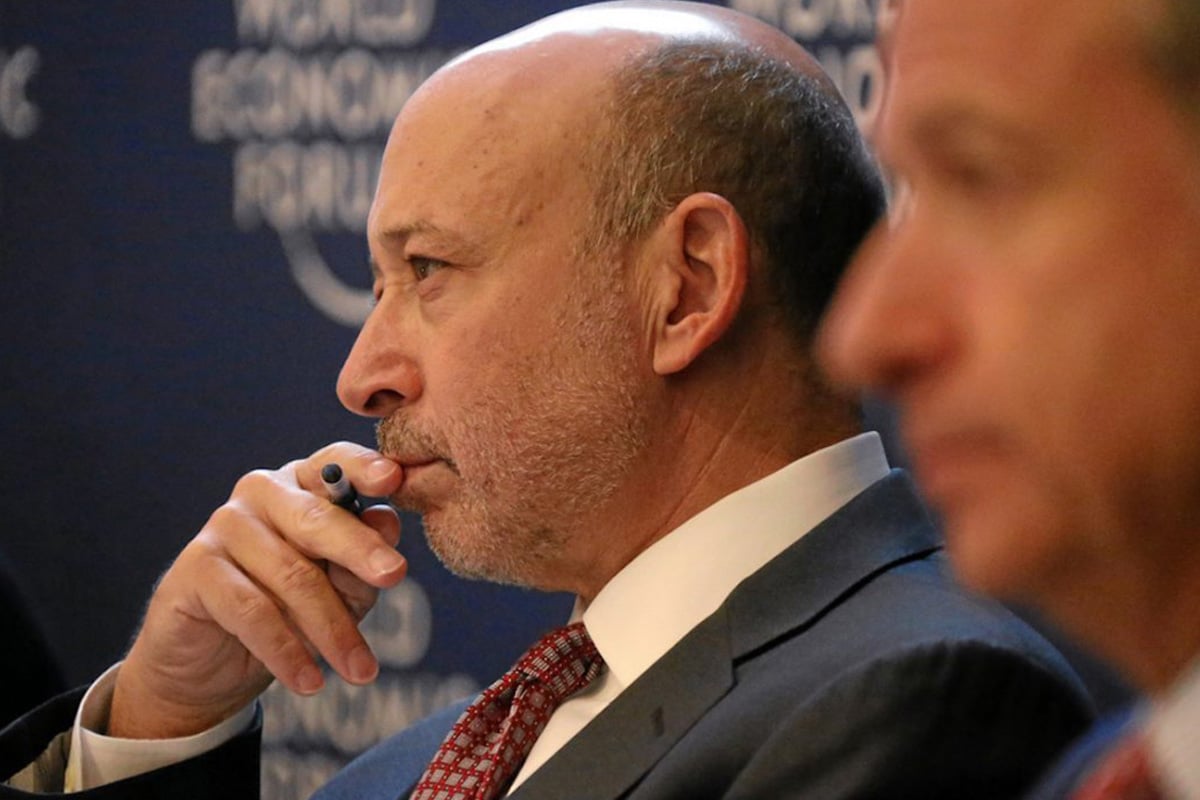When Goldman Sachs CEO Lloyd Blankfein steps out of the C-Suite and into an advisory position at the end of September, he’ll be doing so in style. His new office, billed as having a “coveted view of the Hudson River”, will cost the company anywhere from US$100,000 to US$500,000. Employees aren’t impressed with Blankfein’s lavish new digs, however, as it comes at a time when the investment firm has sought to cut costs.
In a report from Fox Business, sources from inside Goldman Sachs grouse about the apparent contradiction; while Blankfein is rewarded with an expensive office, employees are subjected to insufficient meal allowances, 18-hour days, stringent expenses rules, and open-office floor plans that “herd” them into an environment akin to a “jail”. The report culminates in one disgruntled employee saying that Blankfein’s treatment compared with theirs is the “reason why no one smiles at work”.
Though rather melodramatic in characterisation, the Fox Business report paints a picture of a company that is stingy and unwelcoming. From some commentators, though, the report and its stories about inadequate reimbursements and inconsequential employee benefits have inspired snorts of derision.
Though the disparity between Blankfein’s income and that of the rank and file at Goldman Sachs is considerable, being more than 90 times greater, the average worker at the firm takes home US$93,100 a year, which is double the US national average. Not to mention the fact that Blankfein is hardly a lightning rod for controversy, having deftly steered the investment firm through the GFC to earn numerous accolades. By most accounts, the actual employment standards within Goldman Sachs are hardly as miserable as they are made out to be.
Employee perception
What the report shows though is an increasingly common sense of resentment that workers hold over their employers; a feeling that CEOs profit from someone else’s labour. To get a better sense of the disparity in income between CEOs and the average worker, it’s more useful to investigate businesses that employ significantly more service-oriented or low-skilled workers.
Take Walmart, for example. The US retailer pays its median workers US$24,600 yearly, thousands of dollars below the national average, only to compensate its CEO Douglas McMillon 200 times that figure. Other cases include Stephen Wynn, who pockets around 240 times more than his company’s median worker, and Les Moonves, who, up until his firing earlier this year, earned close to 400 times more than the median CBS employee. Often, the question is not whether a CEO deserves such high pay; rather, it is whether the median worker deserves such low pay.
Often, the question is not whether a CEO deserves such high pay; rather, it is whether the median worker deserves such low pay.
Of course, one could argue that these figures misrepresent the nature of employment within the company, and don’t consider part-time or temporary staff.
That’s the argument that Amazon made earlier this year, when US Senator Bernie Sanders criticised wealth disparity within the digital empire and touted legislation that would tax the company for any welfare payments made to its workers. Amazon argued that the median income Sanders cited – US$28,446 – was “inaccurate and misleading”, and that the figure underrepresented the company’s annual pay, which was actually US$34,123. But that’s still about US$10,000 short of the US national average.
Does it add up?
The raw numbers are admittedly frightening. But, behind those figures hide details that put a damper on the idea that CEOs are unduly reaping the rewards of others’ labour.
Jeffrey Dorfman of Forbes magazine did the maths on this and found that if all the CEOs in the US had their income seized and redistributed, everyone in the country would receive exactly $46 more a year. He also highlights the under-discussed point that shareholders are usually the ones determining – and paying for – these large incomes, which are often believed to be a symptom of inequality within businesses.
Although it might seem satisfying to rhetorically flay CEOs for their enormous wealth, the truth is that redistributing their earnings wouldn’t have much of an impact on the median worker in the long-term.

The problem with viewing income inequality through this lens is that it assumes that employees are simply envious of the money they could have had if their CEO didn’t have it. Per the Fox Business report, it’s probably fair to assume that workers at Goldman Sachs don’t believe they live in poverty. What is difficult to argue against – and what the report tries to communicate – is that the workers don’t feel the company cares about them, at least, not as much as they do for an office that costs thousands of dollars.
Even for workers in comparatively comfortable positions, there is a natural feeling of resentment that accompanies any one employee benefiting from the business’ success at the expense of the others, whether that’s through financial remuneration or some other form of compensation.
The problem extends beyond saying that any one party is paid too much or too little. At issue is a motivation gap, where workers feel detached and resentful. If this were any other productivity issue, employers would consider it a matter of utmost concern. Instead, the debate is framed as a matter of ‘haves and have-nots,’ which encourages the type of mathematical rhetoric that doesn’t account for the lack of motivation and trust a move like Blankfein’s can have on employees.
If this were any other productivity issue, employers would consider it a matter of utmost concern
’Radical transparency’
So how can leaders best alleviate these problems, if redistributing their income isn’t the solution?
One way may be a policy of ‘radical transparency’, which goes some way towards justifying why hierarchies exist in business. Ray Dalio, Founder, President and CIO of Bridgewater Associates, ensures that all meetings are recorded for all staff to review. That has caused his employees to describe a feeling of greater confidence in the company, and as one former employee stated “even though their job didn’t put them in regular contact with Dalio, they felt as though they got to know him personally through the (recordings).”
Others, like Rubrik CEO Bipul Sinha, engage employees by ensuring they can access every boardroom meeting, and allowing them to ask him any question they want. This allows employees to directly interrogate leadership and therefore better understand why decisions are made, which, in the case of Goldman Sachs, might have stopped embittered employees from maligning the company in the media.
Fundamentally, the situation at Goldman Sachs isn’t about money. Though the price tag for Blankfein’s office is outrageous, employees aren’t griping about its cost relative to their own pay. They’re understandably frustrated because of the perception that leadership in the business is not held to the same standards they are. Perhaps better communication would help alleviate the issue in the long-term and give employees a reason to smile.







